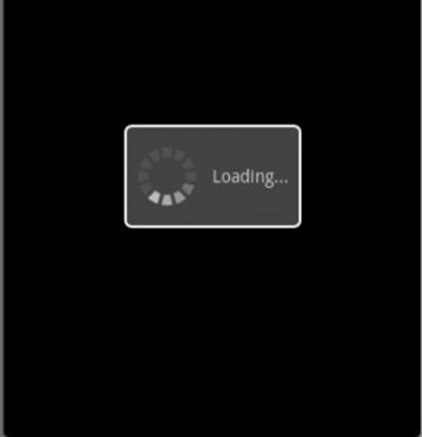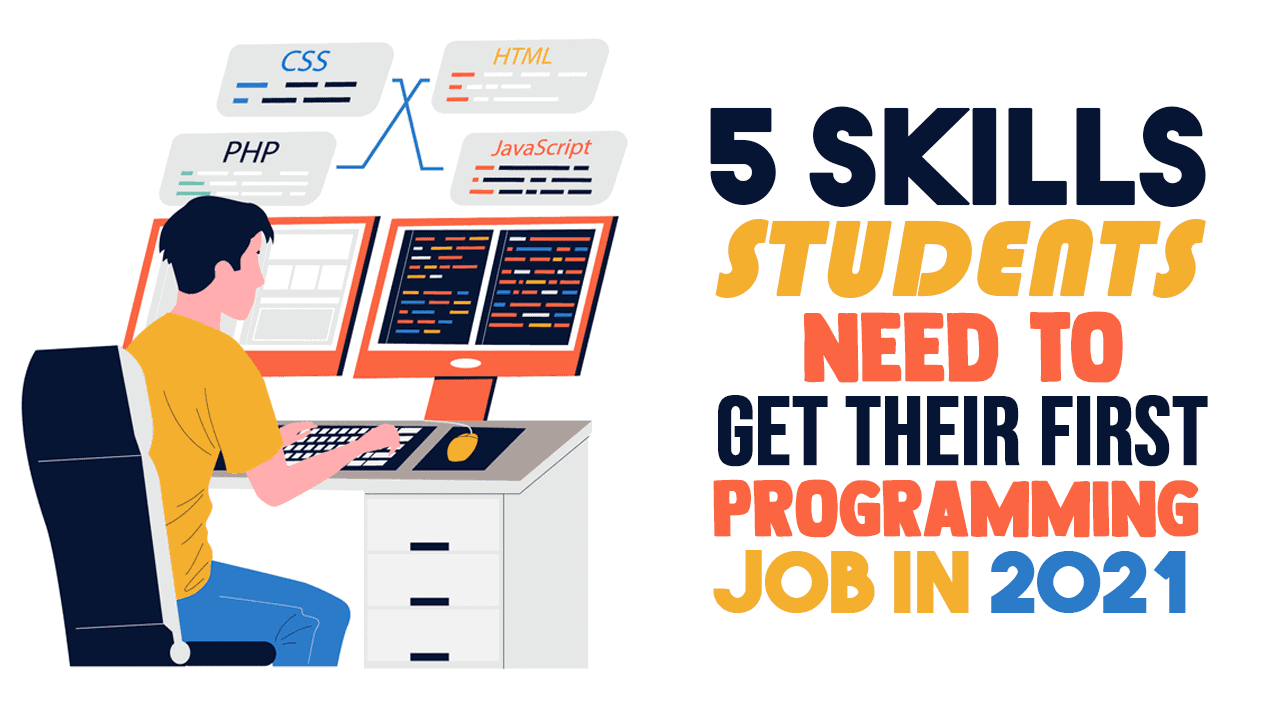
by Amanda Dudley | Mar 29, 2021 | Algorithms, Career, Education, Guest Post, Learning, Programming, Self Improvement, Skills
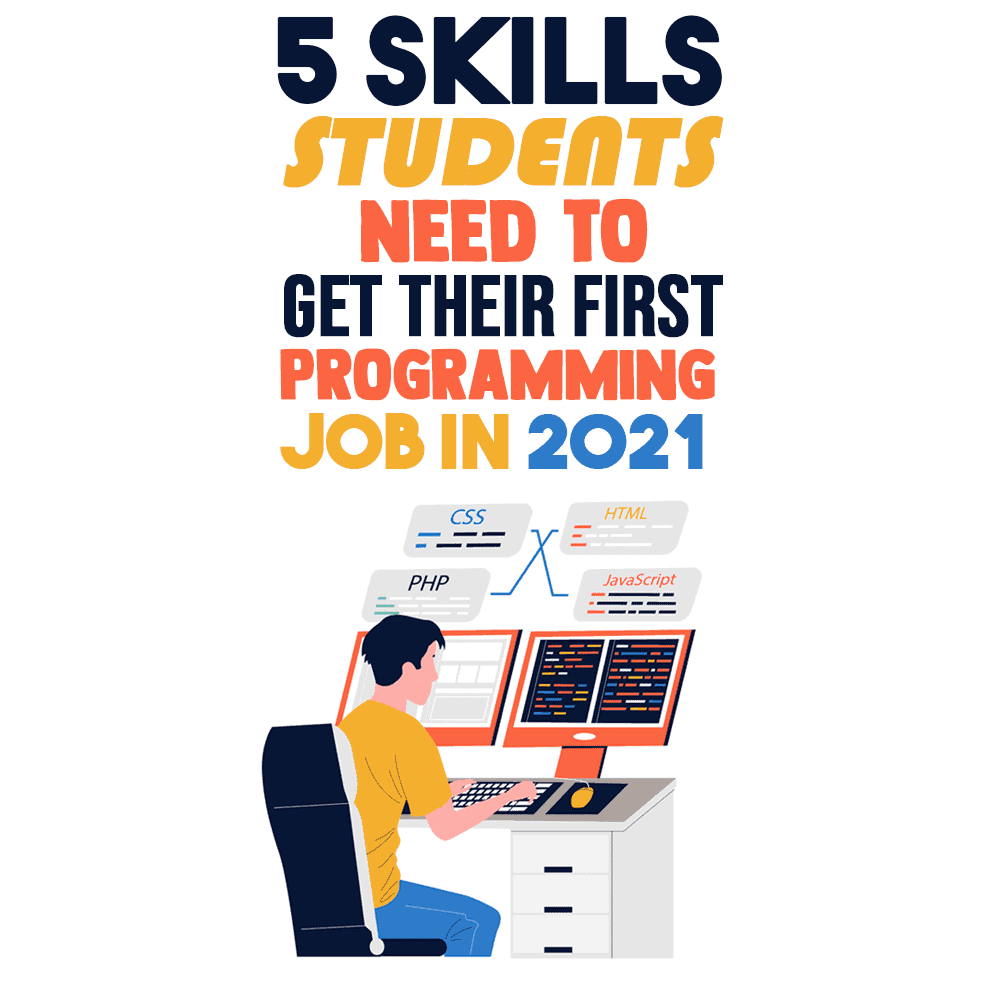 What skills do you need to land a programming job in 2021? Well, this is a tricky question to answer. In today’s world, programmers need more than just IT skills to survive in the job market.
What skills do you need to land a programming job in 2021? Well, this is a tricky question to answer. In today’s world, programmers need more than just IT skills to survive in the job market.
As a college student who new to the world of programming and has dreams of becoming a successful programmer, you will need a wide range of skills to help you perform optimally and carry out your job responsibilities. The best programmers often combine their software engineering skills with other soft skills, which helps them stay at the top of their game.
According to research carried out by Google, successful tech experts and developers have soft skills prevailing in their knowledge kit. This simply proves that modern companies are now looking for programmers who can offer more than just coding skills or STEM expertise. So, if you’re ready to become a gem in the software programming job market, read on about some of the most profitable skills to learn in 2021:
Develop communication skills
There is a popular stereotype of programmers who sit solo in a corner, working on their computers without saying a word to anyone. While this may be true in some cases, it doesn’t take away the fact that you need excellent communication skills to work on both simple and complex projects.
But how do you communicate with a team on a deep level? Well, to interact with people professionally, a great programmer should be able to have a clear understanding of problems and then propose viable solutions coherently. One way to ensure that you get an accurate perception of problems is by working on your listening skills. Having the ability to listen, you can easily grasp the issue that needs discussion and draw meaningful insights from it.
However, excellent communication skills don’t just end at listening and speaking. They also involve being able to read the room and knowing the appropriate time to suggest any solutions you may have.
To boost this skill, you could practice talking to other students in a clear and coherent manner. That is, your ideas should be easily understandable even by a layman. There’s no need to speak for hours or cram programming jargon in your sentences.
You could practice speaking up by actively participating in group presentations. Don’t be scared to take the front stage every now and then.
If you’re struggling with practicing in your physical classroom, there are tons of online communication courses you could take on Udemy or Coursera. Such courses let you dictate your own pace so you won’t have to worry about interference with college work.
Brush up on your mathematical skills
Let’s admit it: you probably skipped math class once or twice in high school. While this may not be a big deal in your personal life, it may pose a little problem if you’re trying to pursue a career in software programming.
Most niches in programming require a thorough understanding of basic Algebra and Arithmetic since programming is often considered as applied math. For instance, in basic programming, binary math is used to represent numbers in a computer. Similarly, linear Algebra is used for the transformation of matrices.
Even calculus problems pop up every now and then in machine learning, as the former is one of its major pillars. For instance, the concept of calculus is used in algorithms such as Stochastic Gradient Descent (SGD) and Gradient Descent algorithms.
If your mathematical skills are dismal, you may want to consider getting a tutor or visiting the world’s largest tutorial hub – YouTube (you can start by checking out the Simple Programmer YouTube channel!) Focus on Algebra and/or Calculus as these studies are the most relevant ones when it comes to programming.
Work on Problem-solving
 The whole essence of programming is centered around solving both complex and simplistic coding problems. This is the meta-skill that defines your status as a programmer. You should be able to demonstrate computational thinking and break down complex problems into solvable ones.
The whole essence of programming is centered around solving both complex and simplistic coding problems. This is the meta-skill that defines your status as a programmer. You should be able to demonstrate computational thinking and break down complex problems into solvable ones.
Generally, code is often written to solve a particular problem. As a programmer, you will be required to identify problems and then come up with viable solutions. If you don’t have a passion for solving problems, you will most likely end up frustrated because, in some cases, you may need to develop multiple solutions for one problem.
To help boost your problem-solving skills, you could try practicing this way: search for a common programming problem (Topcoder is a great crowdsourcing company that offers challenging projects) and then come up with a solid plan to tackle it. You can come up with a strategy by studying the problem and brainstorming common solutions to similar issues. The way expert programmers tackled their problems will give you an insight into possible solutions.
Next, divide the problem into sub-problems (this process is called dynamic programming) and come up with sub-solutions. Once this is done, you can connect the dots and generate a solution for the original problem. For instance, if you’re trying to find the Longest Common Subsequence, you could break down this problem, make a flowchart, and then go on to practice pseudocode.
Improve your writing skills
This may come as a shocker to you (or not), but programmers have to be good writers as well. A professional writer is the one who can coherently discuss technical implementations and complex topics in written discourse. In addition to your IT skills, you’d also need to have a flair for writing in a way that ensures your message is passed across. As a programmer, you’d most likely find yourself doing a lot of technical writing. Hence, you should be able to explain complex concepts and processes in a non-technical way when documenting your work.
You may also find yourself in situations that require you to document or communicate your processes and results to people who may not have the same level of technical knowledge that you do. For instance, you may need to answer programming questions from less technical clients via emails or other communication channels. In such cases, it’s best to have a proper touch for words and be flexible in your expressions, depending on message recipients.
Have a Healthy Dose of Inquisitiveness
No one says you have to be a Curious George who annoys their team members. However, successful programmers with decent IT skills often have a healthy dose of inquisitiveness towards problems and solutions. For example, you should ask questions like: How does this line of code work? Why does action A solve the problem but action B doesn’t?
Even though curiosity kills the cat, it does the exact opposite for any software programmer. Therefore, inquisitiveness will help you learn new concepts faster and stand out from the crowd.
If you’re curious, this trait will fuel your desire to code and help you to dig deep into problems. Subsequently, you’d learn new concepts and solutions that you didn’t even know exist.
A great way to develop curiosity as a programmer is by constantly experimenting with coding projects and problems. These experiments will generate new questions for you to find answers to, and as such, ignite your curiosity.
List These Skills in Your Resume
Now that we’ve outlined the top skills that would land you a programming job in 2021, it’s important to learn how to list them in your CV. Doing this will make your resume stand out and definitely catch the eye of even the most impatient recruiter. But how exactly do you do this? Here’s how:
Add the ‘skills’ section
There are two major options you can choose from if you’re trying to figure out a way to list your skills. You may decide to create a separate skills section and then list out specific skills and qualifications. However, this option is more suitable for people who have had extensive experience in the field, and this brings us to the second option.
Alternatively, you could simply weave your skills into your professional experience section. This is an excellent option for budding programmers as it is the right way of stating that you have little professional experience.
Use examples
When listing your skills, it’s important to pad them with specific examples in order to provide additional context. For example, if you’re listing problem-solving skills, you should ‘seal’ your expertise with examples when you encountered a complicated coding problem and solved it using computational or critical thinking. This way, a recruiter will be assured you do have expertise in the field and can boast of more than just generic soft skills.
How To Improve Your Programming Skills
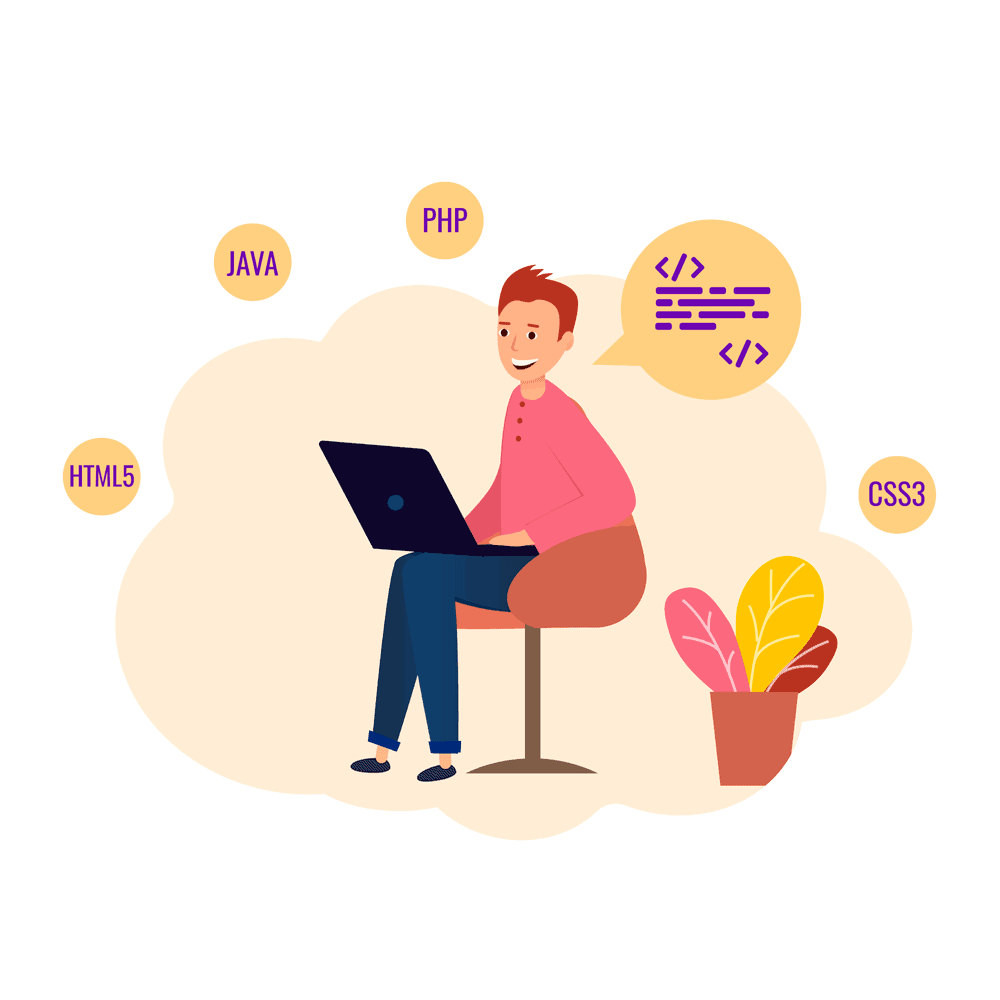 If you’re a newbie to the world of programming and have little IT skills, there’s a huge chance you may be feeling under-skilled, especially when you compare yourself to experts in the field. Now that we’ve discussed the soft skills you need to have as a budding programmer and how to list them in your CV, here are some tips that will help you raise your capacities and become a pro in the game:
If you’re a newbie to the world of programming and have little IT skills, there’s a huge chance you may be feeling under-skilled, especially when you compare yourself to experts in the field. Now that we’ve discussed the soft skills you need to have as a budding programmer and how to list them in your CV, here are some tips that will help you raise your capacities and become a pro in the game:
Read code
This is one of the most valuable hacks for honing and bettering your programming skills. Read code written by other programmers and set a challenge for yourself. When you read other programmers’ code, you get to see how they solved the problem and thus can figure out alternative routes through which you could have solved it.
Write code
What is a better way to learn how to write code than by actually writing it? Working on personal programming projects offers you the opportunity to get first-hand knowledge and experience in the field.
With constant practice, your programming skills will improve.
Here’s one thing you should know about programming and technology in general: tools come and go. The coding tools you use now may become obsolete in the next few years.
As such, you should focus on learning the basic details of programming and getting practical advice instead of becoming overly reliant on tools. This way, you would not find it challenging to adapt to new programming apps and changes.
Network with other programmers
It certainly helps to cooperate and exchange ideas with other experts in your field, especially if you plan to pursue a programming career in the future. You could also try visiting hackathons or coding boot camps during semester breaks to network with other people like you.
At these boot camps, there’s a huge chance that you’d find an expert who can answer any questions you might have about professional coding. However, if you’re too choked with college work to visit a boot camp, you can join online coding communities and connect with other budding programmers to widen your scope of knowledge.
Kick-start Your Programming Career by Learning These Skills
If you’re trying to land a lucrative programmer job in 2021, you’ll need to be armed with the right skills and experience. You’ll need to work on your communication, writing, and problem-solving skills and improve your hard programming abilities by reading and writing code and learning new techniques.
The five skills listed in this article will not only look good on your computer programmer’s resume but will also land you a dream job. Good luck!
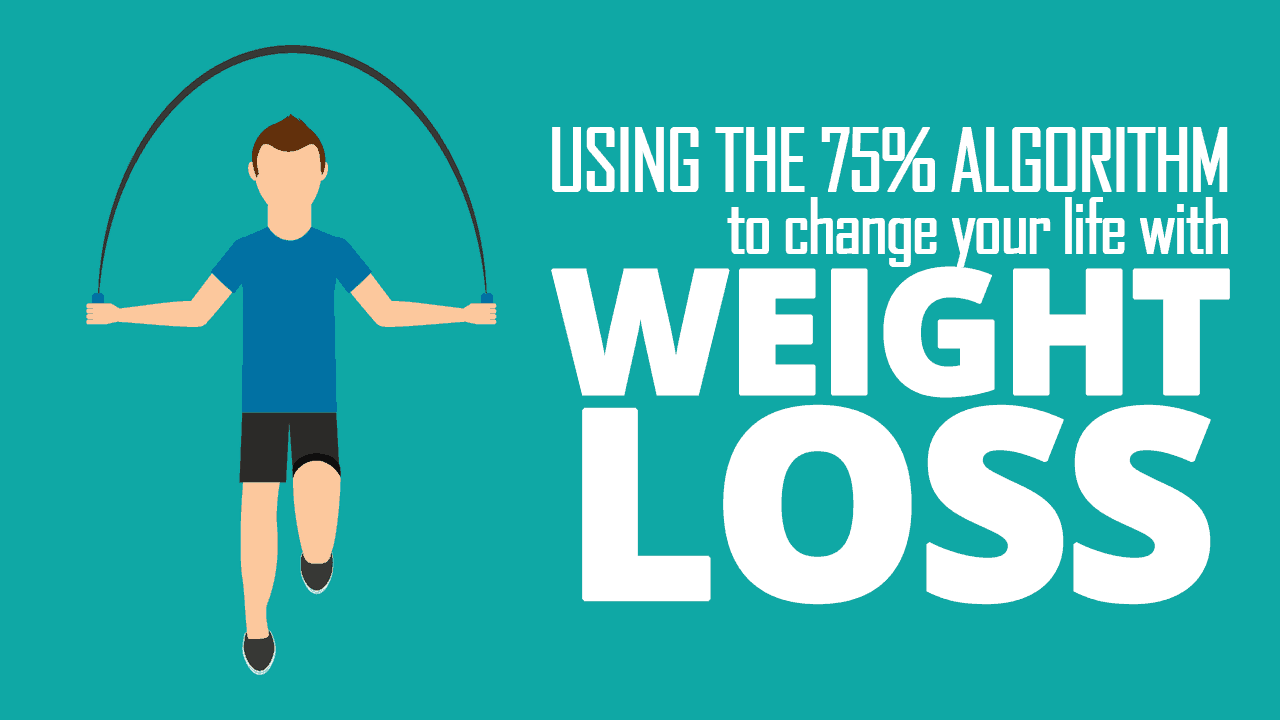
by Aaron Thomas | Mar 24, 2017 | Advice, Algorithms, Cool Stuff, Fitness, Goals, Guest Post, Psychology, Self Improvement
Where I’m Coming From
In my teens I was heavy, very heavy. I have always been a big guy but this was not an issue of being large-framed or big-boned, even though I am 6’4”. I was fat, I was obese, and I hated being that way.
The first 17 years of life didn’t teach me very good dietary or exercise habits, and the issue was only exacerbated in my early teens, when I discovered my love for computing technology. I spent countless hours sitting on my butt with my face buried in my computer monitor. I learned a lot about computers and programming, but gained a lot of weight on top of already being heavy.
During the worst years of my teens, when I was inactive and habitually eating very poorly, my weight maxed out at 398 pounds. I hated being that heavy but had no compelling reason to change and so I didn’t. I sat at my desk, ate chips, and wrote C code.
It wasn’t until I entered college at the age of 17 that I started caring about my weight and my appearance. Most people would think that the societal and peer pressure of high school might have encouraged me to change, but unfortunately I did not have that influence, as I was homeschooled through high school. And let’s be honest with ourselves, even in public schools there are plenty of excuses to not care about how we look, and how healthy we are.
After entering college, it didn’t take long for me to feel an overwhelming desire to change. I didn’t want to die of a heart attack at 45, I wanted to fit in, I wanted to be able to participate in sports and physical activities, and even more, I wanted to have a fighting chance at dating, and, given that I was already an antisocial nerd, I knew I needed any help I could get.
At first I didn’t have the first clue about what I needed to do to lose weight and get in shape. After my first year of self-loathing and overwhelming desire to change I began to study, and study, and study, and what I found was that there is no magic diet, no wonder pill: nothing but hard work and smart thinking was going to help me. Being a technically minded individual I felt like my best approach was to program myself into a healthier lifestyle.
And so I set out on a path that would change every aspect of my life for the better. It is my hope that the experiences I have been through, the process I created for myself, and the knowledge I have gained will be a help to others who have been in, or who are in, the same situation that I was in.
The Overview
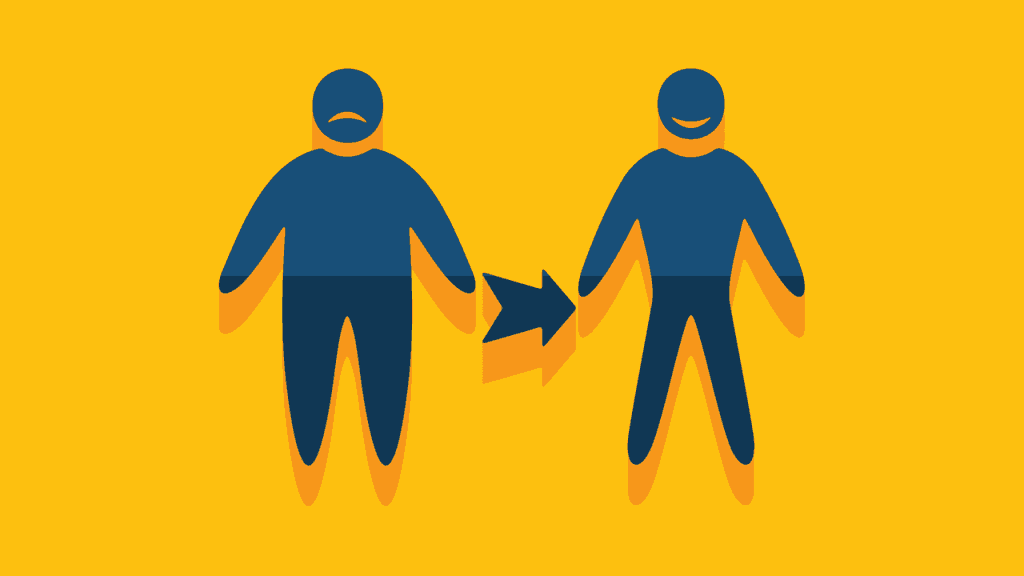
The learning process that I went though has several stages, and unfolded over many years. I want to give you a brief outline of the key stages to making a transformative lifestyle change before I tell you about my journey through them.
Mental Preparation
The first step is mental preparation. You will have to be harsh, and brutally honest with yourself during this stage. As much as honesty can hurt, and as hard as it is to be so grossly unhappy with yourself, it is a necessary part of the process in order to motivate yourself to change.
I went through years, in my teens, of disliking myself and my body, hating that I sat on my butt at my desk all day and all night. When I entered college I was doubly unhappy with myself and my body and all that time of self-loathing was preparing me for a change.
Ultimately, the motivation to change has to come from within. No one will make you change or make you lose weight; you have to have the motivation and mental preparation for yourself. This is exactly the same as solving a hard coding problem, designing a complicated system, or even writing a long boring technical document. The focus and motivation has to come from you.
Habits & skills
As with learning any new discipline, it is more important early on to memorize what you know is correct and act on it, even if you don’t understand yet why it is correct. Park further away from the door. Take the stairs instead of the elevator. Never order a “large” combo meal from the drive-through. Eat more fiber. Drink more water. All of these things are little examples.
When you are learning to code, your text books or instructors tell you, “Never use a GOTO! GOTO statements are bad!” You don’t know why they are bad, but you sure as heck don’t use them. You have to build up good habits, and good decision-making abilities before you can think for yourself. (This is different from willpower, as I will explain later on).
This was the second stage I went through: training myself to see my own life from the outside in, and practicing good habits and good decision-making, even if I didn’t understand why something was important.
Major activities
Once I had some basic skills mastered and knowledge sets acquired, it was time to start really flexing my willpower and basic decision-making skills. I started out by walking around my block every day, no exceptions. Over time, as it became easier and easier, I forced myself to do more laps, until one day I began to jog the laps— fewer than walking at first, but eventually I built back up to the same number of laps, and more.
Adding activities that will exercise your body, but also provide you with joy is a major part of changing your health for the better. If I had gone to the gym every day and made myself work out on an exercise machine, I’d have been bored out of my mind.
Getting outside gave me exercise, and gave me some joy. You have to have both to succeed.
Training your Tastes
By far the hardest, but also most important stage I went through was this one. Training my tastes to be satisfied with healthier foods. This is hard, and will require the most willpower of any of the stages. You can lose weight without doing this, but you cannot be “healthy” overall. If you do not go through this stage, the burden of losing weight will be placed solely on the activities stage, which can be done, but it makes it that much more demanding.
Details of my Stages
Now that I’ve given you a frame of reference with which to approach the rest of this article, I’d like to jump right in with the details of what I went through in each of the stages of my weight loss process.
Mental
As mentioned before, this was the easiest stage. It isn’t hard to feel bad about yourself and want to change. Heck, if you are human, you feel this way every day of your life about some aspect of your body, personality, position, etc.
What’s difficult is actually doing something about it. When you decide to act you have to have the correct mindset, otherwise you will fail. A parallel would be trying to write functional code in an object-oriented language. If your mindset and frame of reference is wrong, you will fail.
Everybody knows someone like this. A friend or relative who is unhappy with their weight, and who, unlike a lot of people, is trying to do something about it. They try the Paleo diet, they try the Atkins diet, they try to take pills that they bought at 3 a.m. from the home shopping network that will just make the fat “melt away.”
The problem is, what this friend or relative is doing is not going to work, and whatever they do in the future will not work! Not until they change the way they are thinking about weight loss.
Wanting to change is good, but you have to first understand that change cannot be for a day, or a month, or a year.
Change is something you do with the goal of it being forever. You might say to me, “Duh, I don’t want to be skinny and fit for just a year, I want to be skinny and fit for the rest of my life!” and that’s great. I want you to be skinny and fit the rest of your life too!
Training Your Mind
There is a problem with your thinking, though. And the problem is that in order for your body to change for the rest of your life, your mind has to change for the rest of your life as well.
A programmer can’t learn how to code simply by typing syntax over and over until muscle memory makes it easy to type a programming language—your brain has to be engaged in understanding the meaning of what you’re doing, otherwise you will never be a programmer. So why is it that we think we can lose weight without training our minds as we would with any other acquired skill?
Now, I’m not saying your mind has to change all at once right now, but you have to realize that just like how changing your body is a slow iterative process that happens over time, so is changing and training your mind and your thinking processes.
If you spent zero effort attempting to diet and exercise, but spent every ounce of mental energy convincing yourself that fast food is bad and that raw vegetables are delicious and good, I guarantee you would lose weight and be healthier than you would by trying to diet and exercise while craving a BigMac every waking moment.
The goal here is not to change the way you think overnight, or even before you start anything else, but rather just to recognize that working iteratively over time on your thinking is just as important as daily exercise. There is no magical overnight solution. If you want to change for life, then you have to be willing to invest a large amount of time and effort into changing.
Tip: An exercise that helped me a lot in this stage was just telling myself, out loud, that I was doing something unhealthy whenever I did it. I didn’t expect to stop doing it right away, I just didn’t hide anything from myself with ignorance or half-truths.
Habits & Skills

We often learn how to do certain things correctly without knowing why we do them that way. But people often want to know why they should eat a certain way or follow a specific workout plan. And if they don’t get an answer to ‘why’ that they understand, they may not want to follow that program.
When I was reading my first C programming book, I had no idea what inversion of dependency was, or why it was good, or even how to do something like that, even if someone with years of experience tried very carefully to explain to me why it is good, and why I should know about it. I was clueless.
When you are just barely starting to learn how to do something like losing weight and starting a fitness program, you need to understand that when you ask “Why?” you are likely to get a beginner answer. There may be a much more complicated answer that is harder to understand or explain but that answer is earned with time and practice.
If we fail to lose weight or get fit, it’s usually because we are not training our brains with good habits.
Eating large portions of bacon every day, and nothing else, may be something you want to do, but it will not be healthy for you. You may lose weight in the short term, but you will not be healthier for it.
There are any number of things we tell ourselves in order to justify something we want, or to justify not doing something we dislike. You have to remove this weakness, and you remove it by training yourself in good habits and skills, without question.
These things do not have to be huge things—as with any trained set of good habits each one is likely to be very small and manageable.
I never used an elevator. Ever. To this day I will take the stairs unless something requires me to use the elevator.
- I never parked in the first 10 spots closest to the store or business I was going to.
- I never ordered a “large” size value meal from a fast food restaurant.
- I never ate in the car while driving.
- I never ate at the computer or while watching TV.
- If I wanted to eat, I dedicated time just to eating, then went back to what I was doing.
- I ate smaller, more frequent meals. I didn’t understand why this mattered, but a lot of people said it helped, so I did it.
Note: You may find your daily dietary schedule will change once you reach your target weight and go into maintenance mode, but this is a very different stage from weight loss. You may even find one meal a day is best for you in maintenance mode.
- I made myself stand up from my desk and walk around for a minute or two every hour or two. I can’t imagine why this little bit of exercise would help, but I did it because a lot of more experienced people than I was said it would.
- I did bicep curls sitting at my desk with my copy of Knuth’s Art of Computer Programming while I was thinking about a hard problem. Eventually I added volume two!
- I started to try to stay standing as often as I could, work at a tall table, and even picked up the habit of pacing back and forth when I was thinking.
Tip: The added benefit to pacing is that it will likely drive your coworkers crazy!
There were countless other things that I did without question because I knew that even though I may or may not have fully understood why, I knew they would be good for me in the long run.
You have to train yourself in good habits and skills now in order to give you the foundation that you need later on when things actually get hard. For example, when you desperately don’t want to do your five-mile jog or eat another serving of chicken and brown rice. You have to have the practice and discipline engrained in your brain to just do what you know is right, and practicing on the little things makes this easier for the larger things later on.
Major Activities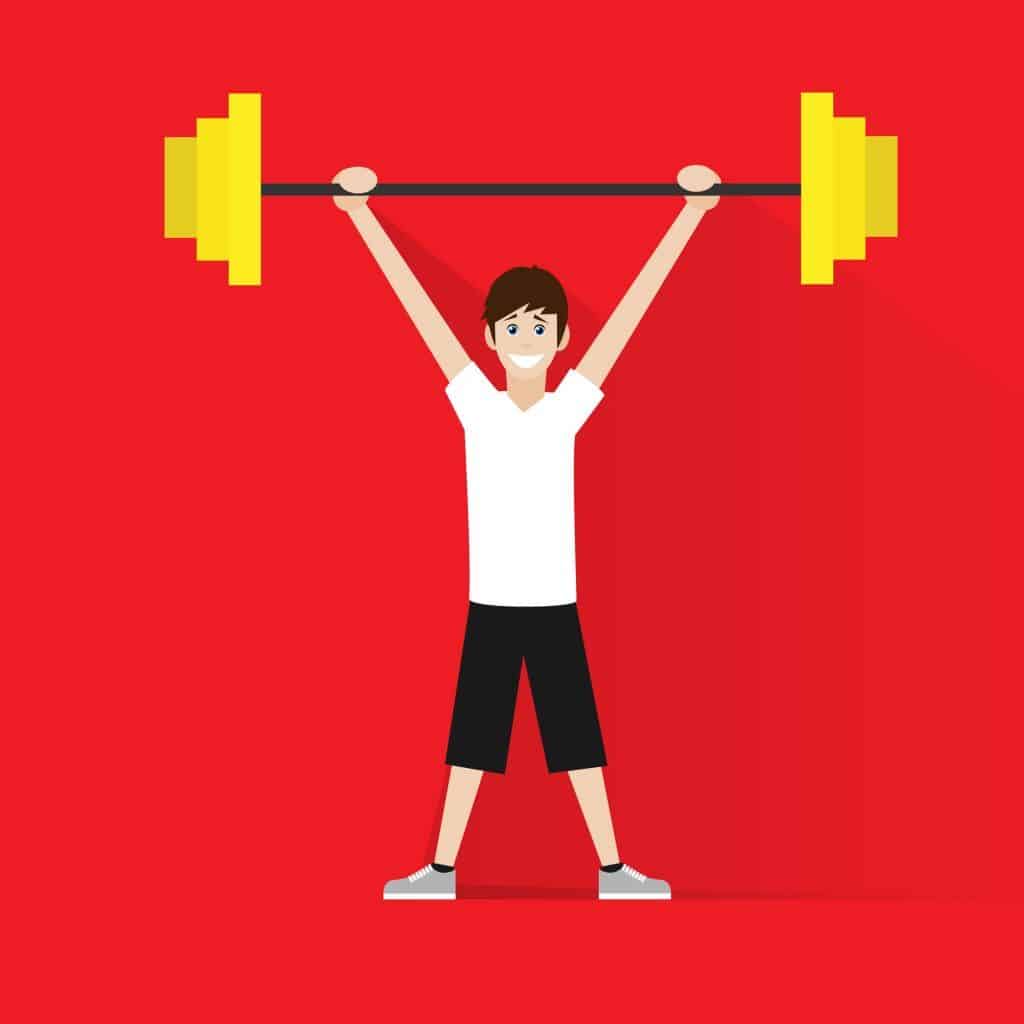
This is where it gets hard. No more five minute walks or short “stand up and stretch” sessions. At some point you really have to start working on the hard things, and adding major activities to your weekly routine becomes a necessary step.
Just like any other step, starting out slow is a good idea. As I mentioned above, my first activity was making myself walk around the block every day, whether I wanted to or not. Come rain or shine, a busy work or school day, it didn’t matter; I made myself take a walk. Having had practice making myself follow the little rules made this easier. Besides, it’s just a walk, right?
Tip: An easy way to make this time productive is to get audiobooks to listen to, or practice explaining design patterns in your head. If you are a contractor or remote employee schedule a meeting that you can be on the phone for during this time. Be efficient and creative with the time and you’ll never notice that you aren’t sitting at your desk.
Over time my walks got longer and longer. I added a lap every few days, until I was walking for over an hour a day. Well, that consumes a lot of time, so being the efficiency-minded nerd that I am, I decided that I needed to start jogging.
Of course, I didn’t jog as many laps as I was walking; I would have had a heart attack. Just as with the walking laps, I started with one. I’d walk a lap to warm up, then jog a lap.
The first jogged lap was a nightmare. I hurt everywhere the next day. Not to mention the embarrassment that I felt, being overweight and bouncing down the street. But there was one thing I knew I had to do: keep going.
Just like the walking, rain or shine, busy day or not, party to get to or lazy evening at home, I always jogged my lap. Eventually, I added a second lap. That was a great day! The day I made two laps jogging around the block I celebrated with my roommate. I think I had a couple beers that night, which of course I had been trying to avoid.
Tip: If you find yourself craving the occasional drink while working on losing weight, hard alcohol has much fewer calories than beer or wine. During my years of weight loss I became quite the Scotch connoisseur, while refraining from that beer or glass of wine with dinner (but remember to always be responsible).
This pattern continued, and over time I added more and more laps. Eventually I was jogging for half an hour straight, not fast, or elegantly, and I was still bouncing down the street, but I was doing it, and that was amazing!
Tip: These triumphs are incredibly important; revel in them. Enjoying overcoming the challenges at each stage, and throughout the stages, is one of the primary fuels that propels you forward. This is no different than when you solve a hard coding problem, or learn a new design pattern. Your excitement and enthusiasm for technology is what drives you forward. Harness that same drive and enthusiasm with your physical fitness.
Taking it Up a Notch
It was at this point that I started feeling more and more comfortable with the idea of more strenuous activities. I had never worked out on weights before, so I gave that a try. I always loved the outdoors, so I gave more challenging hiking a try, and a co-worker who liked to cycle convinced me to buy a bike and go on rides with him.
At first all of those activities were great supplements, but still, I never skipped my jogging.
Eventually my “dabbling” in different activities turned into love of a few. I very much enjoyed weight lifting, and hiking. To this day elements of those activities are in my weekly routine.
Tip: One of the best ways to quickly overcome the soreness of any major physical activity is to do a light warm up exercise before anything strenuous, and full body stretching exercises after any activity.
This is the overarching idea here: I loved a few activities. When you are first getting into the major activities phase you are going to try things you hate, and that’s fine—just do them a little while and move on—but you have to find some that you like.
The habits that you developed before this are going to help you keep looking for and doing the things that matter for a while; not forever, but hopefully long enough that you find an activity that you love. And doing what you love is key, because the only exercise that you will keep doing is the one you enjoy, and the only exercise that counts is the one you keep doing.
Ultimately this process of self-discovery lead me to karate. So now my own exercise routine revolves around my continued pursuit of martial skill.
Would you still be sitting at a desk typing away into Emacs, Visual Studio, Eclipse, etc. if you didn’t absolutely love what you were doing? Of course not. In fact, most other human beings think we are all psychotic for loving what we do.Whatever physical activity you love, this is the stage where you have to find it, and embrace it. Without a major activity that you can embrace and love doing, no amount of willpower is going to carry you through. It is always important to continually strengthen your willpower by building skills and habits, but that is just the start.
Changing Your Tastes
By far the hardest of the stages is this one. Our tastes are ingrained in us throughout the duration of our entire lives and the longer we do something for, the harder it is to change. But, it is possible.
As I said above, this stage is incredibly important and difficult. The failure of this stage in most people’s attempts at dieting is the reason so many people gain back the weight that they have lost.
Again, we start out slow.
The very first thing that I did was to stop adding salt to food. Oh sure, I still ate BigMacs and fries, tacos and burritos(or sushi and salads when I was trying to be healthier), but I never added salt from a shaker or a packet. It’s a little thing, but it’s a start. I noticed a taste difference in some things, and in some things I didn’t.
It may seem odd to start with salt, given that it doesn’t necessarily add to your waistline, but there is method to the madness. For me the reason was twofold: I was worried about blood pressure and my heart health, and salt is one of three things that modern society consumes too much of, inundating our taste buds with more flavor than they know what to do with.
Just think to yourself, “What is my favorite snack when I’m sitting at the computer working/gaming/binge watching?” I bet for most people it has a ton of salt in it.
The other two things, and the next steps in my taste-changing process, are sugar and fat.
Sugar was the second thing to go. No more sugar in my coffee or tea, and on the rare occasions that I had a soda I drank diet. When I ate dessert, I picked ones with lower sugar content. Since I was trying to cut down on salt at this stage too, my snacks of choice tended towards unsalted nuts.
I’m not going to lie. At this point I was dying! It’s easy to think or say what needs to be done, and much harder to actually do it. I struggled to keep salt and sugar out of my diet. I had overwhelming temptations, and what’s worse, the cravings were stronger because I knew what I was doing to myself. I was trying to get rid of those things, forever. I was trying to train my brain to hate salty and sweet things.
This stage is not easy, and you will struggle with it a long time, but it has to be done. The previous two stages lead up to this. Up to this stage you have been practicing good habits, training your brain to have healthier thoughts, and reveling in the small and large victories that come along the way to give yourself mental fortitude—all just for this.
Note: Absolutely do not stop practicing the steps of the previous stages here, especially the self-congratulatory parts when you achieve some new level of health or fitness. This is critical to keeping yourself motivated.
I stalled.
Yup, it was too much for me. I liked salt too much. Sugar was easier for me, but I regressed on salt. Before I could even get to fatty things, I regressed.
It’s a Struggle
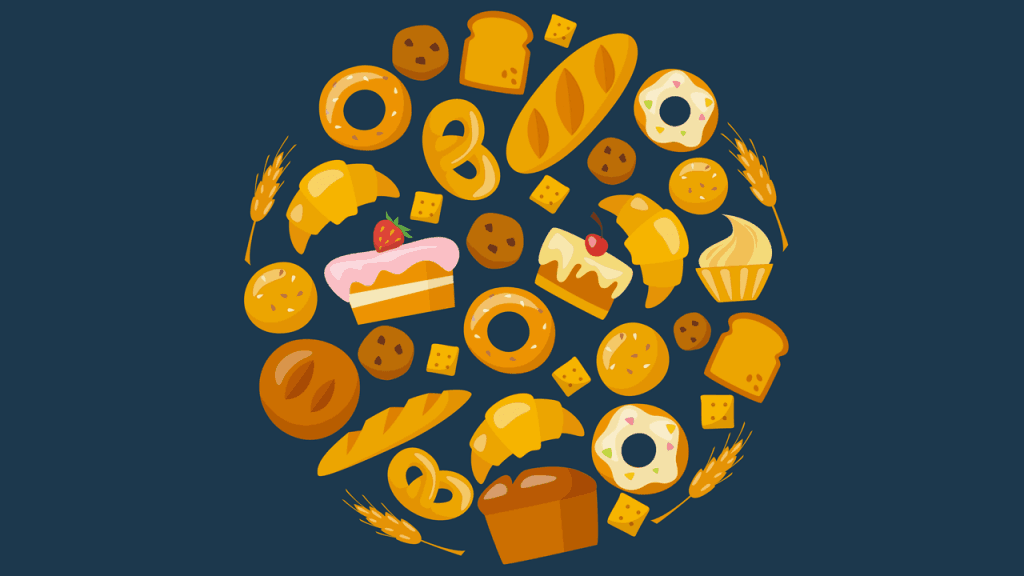
I ended up fighting my taste for salt for years. Sugar was easier to limit over time, mostly because my taste for salt and fat has always been bigger than for sugar. I went back and forth, and back and forth.
Eventually, I decided that I was making progress on sugar, and that was a good thing. I was always going to be fighting myself with salt and I knew it, so, I might as well be fighting my taste for fat at the same time. I added fat to the mental war.
It didn’t seem like I was doing well at first. I struggled with keeping excessive salt and fat out of my diet. I had a few things that were easy to love and healthy, like sushi without soy sauce, but you can’t eat the same thing every day.
Through my ups and downs with changing my tastes, I relied on mastery of the previous steps. I reveled in every victory that I could. I marveled that I was close to my target weight, and keeping the weight off. I hiked to the tops of mountains, took 40-mile bike rides, got up to 65 pound bicep curls, and yet I was still unhappy that I couldn’t get rid of my taste for fat and salt.
The Payoff
Then only a few years ago, I had a realization. I was out to dinner with my wife, and I ordered something with a sauce of some sort, I think it was a chicken dish. The whole time we were waiting for dinner to arrive, I was telling myself how unhealthy I was being, how the sauce was probably full of fat, salt and sugar, and I should have ordered a plain meat, or salad. Then dinner arrived, and I tasted it… and it tasted bad! I didn’t like it. For the first time in my life, I thought to myself, “This food is too rich.” I scraped the sauce off, and ate the chicken without it.
At first I thought it was a fluke, that the chef had messed up and put too much of something in the dish, but it happened again. A few months later we were out again, and I had trouble eating some of the food. It was too rich.
Over time I realized these weren’t accidents. These were direct results of me fighting the battle every day, and I was winning. It wasn’t fast, and I couldn’t tell a difference from day to day, but there it was. I was winning. I trusted the process, and followed it day to day, and over time I saw results.
I was happy for a month after I had that realization. Like, “Passed Distributed Systems advanced study 789 with an ‘A’ during my grad program” happy. Got my first developer job out of college happy. Got my first “Senior” Software Engineer job title happy.
So, of course, I celebrated, and embraced the joy, and used it to redouble my efforts.
I still struggle, I still have days where I regret my dietary choices. I gain a few pounds and lose a few pounds. But now, I am happy to do so, because I am winning.
My Major Guiding Principle
During my time going through the weight lose process I gained a guiding principle that I want to share. This was something that I only discovered in hindsight, but is likely one of the most important things that I was doing, unknowingly, all along.
The 75% Rule
This is the big one; the one piece of advice to rule them all. The 75% Rule.
We are all human. We are all fallible, and nobody has infallible willpower. Because of this, you have to tailor your process to be tolerant to when you will fail, and optimized to when you are doing everything right.
In retrospect, around the same time that I realized that I was “winning,” I realized something that I was doing and had been doing the whole time. I was using the 75% rule. It’s a simple rule. No matter what stage you are in, or what particular thing you are struggling with at the moment, when you are struggling you just have to make the healthy choice 75% of the time.
Let’s be honest, I am not superman. I skipped workouts. I ate junk food in the later stages and regretted it. Even the healthiest people have “indulgences” of some sort. But for me, it was easy for me to control myself when I knew I would be able to have a burger occasionally, or skip a workout every once in a while. Roughly ¼ of the time, I would get to be lazy or unhealthy. And it kept me strong, because now instead of thinking to myself, “I will never get things X, Y, Z that I love again!”, I knew I would occasionally.
It’s important to not abuse this rule though. It only applies when you are struggling. Not every decision of every day. “Should I eat junk for breakfast, no, should I eat junk for lunch, no, should I have that candy bar in the afternoon, no, should I have a large supreme pizza all by myself for dinner, yes! 75% rule!”… it doesn’t work like that.
When your willpower is high, and a decision is easy, you make the right decision because it’s easier to do so. When your willpower is low and you are struggling, that’s when you tell yourself, “I am on two out of four cravings, hold out for one more craving and I can indulge.”
A Lifelong Pursuit

Struggle is a part of life. It is what defines us, and sets us apart.
No matter how motivated you become, you will struggle to stay motivated, and to make the right choices. The things that I’ve learned, I believe, can help anyone going through this kind of life change, but I by no means have all the answers to always staying motivated, and overcoming all your health struggles.
And what’s a life-changing article without some old Asian wisdom thrown in? Right?
So here goes. Something that I’ve reflected on quite a bit in my years of martial arts training and in my physical fitness journey are a pair of quotes from Gichin Funakoshi, the Okinawan karate master responsible for popularizing karate on mainland Japan in the 1920s. The first is this:
“Karate is a lifelong pursuit” – Gichin Funakoshi
How many of us have dedicated our lives to technology, to programming, to writing, or to business? A dedicated life is a productive one, and passion drives that. You have to have passion for your health and fitness, and with that passion you will have the drive to pursue a lifetime of good health.
The second quote is this:
“The ultimate aim of Karate lies not in victory or defeat, but in the perfection of the character of its participants.” – Gichin Funakoshi
Shouldn’t perfection of character be what we all strive towards in our daily lives, in our jobs, and in our personal relationships? If we want to perfect our character, then we want to lead a healthy and fit lifestyle, not only for ourselves, but as an example to others.
If you have gotten this far then thank you for reading. I genuinely hope that this article and my experiences can help you to have the kind of healthy lifestyle that you want. If only one person reads this and is inspired then I am satisfied, and all the hours I’ve spent writing this and reflecting on my experience will have been worth it, not just for myself, but for you as well, that one person.
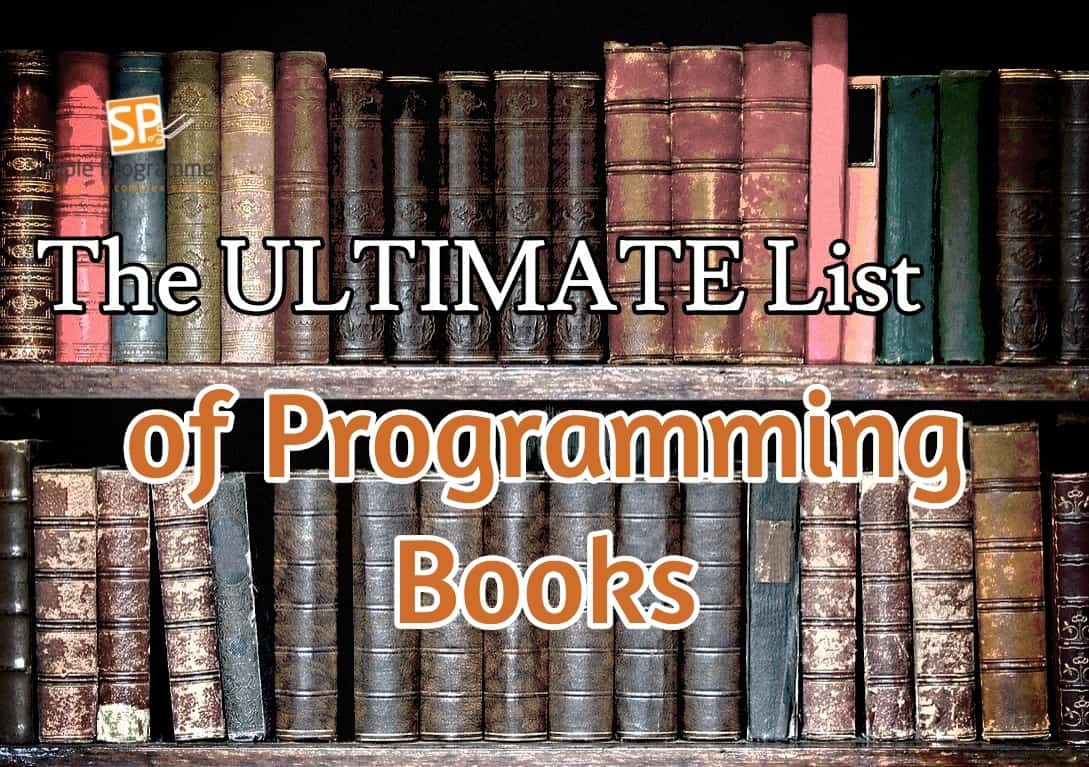
by John Sonmez | Mar 23, 2015 | Agile, Algorithms, Architecture, Best Practices, Book Review, C#, Career, Education, Java, Language, Learning, Refactoring, Self Improvement
Quite often I am asked about the top programming books that I’d recommend all software developers should read.
I’ve finally decided to put together a list of the programming books that I find most beneficial and that I think every programmer should read.
Now, just like my Ultimate List of Developer Podcasts, this is my list, so I get to make the rules. (Which means I get to advertise my book at the top of this list–actually both of them.)
First, off:
My most recent book is a massive tome called “The Complete Software Developers Career Guide.”
And it is massive, weighing in at about 800 pages for the printed version.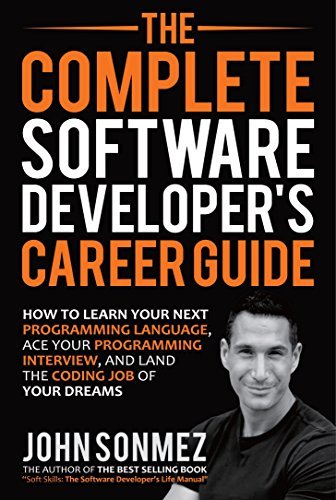
I wrote this book primarily because there just wasn’t a good book out there–or really any book for that matter–which told software developers everything they needed to know about how to have a successful career in software developer and to answer all the common questions I get like:
- How do I get started as a software developer?
- How do I learn a new programming language?
- College, boot camp, self study?
- How do I deal with my asshole boss? My coworkers? Discrimination?
- How do I find a new job? My first job?
- How do I get a raise?
- What do I actually need to know to be a software developer?
- How do I MAKE MORE MONEY and advance my career?
I could go on and on, but I think you get the point. Anyway, the goal was to create the one stop how-to guide for all software developers, regardless of career level, to manage their careers.
The book has been a huge success so far actually debuting #5, yes that’s right, #5 on the Wall Street Journal Non-fiction Best Seller list on the week of it’s release.
It’s a book every software developer should have. Period. (And not just cause I wrote it.)
Next…
After reading all the books on this list, being in the software development field for over 15 years and training hundreds of thousands of software developers through my online courses at Pluralsight, I wrote my own book called “Soft Skills: The Software Developer’s Life Manual.”
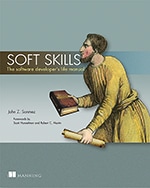
Now, obviously I highly recommend this book—but not just because I wrote it.
I wrote the book because I felt that there was a large gap of knowledge missing in the programming books that were out there.
There are many excellent books—as you’ll no doubt encounter on this list—but, there weren’t any books that provided a comprehensive treatment of the soft skills required to be successful as a software developer—and to live a better life in general.
So, that is what “Soft Skills: The Software Developer’s Life Manual” is. I wanted to write the book that I wished someone would have given me 15 years ago when I first started my career as a software developer.
Ok, that is enough plugging my own book. If you want to check it out, you can find plenty of reviews for it here.
(And before you binge read this whole list, you might want to check out my guide: 10 Steps to Learn Anything Quickly)
Foundational programming books
This first list of books are ones that I consider to be a good starting point and provide a solid foundation for any software developer:
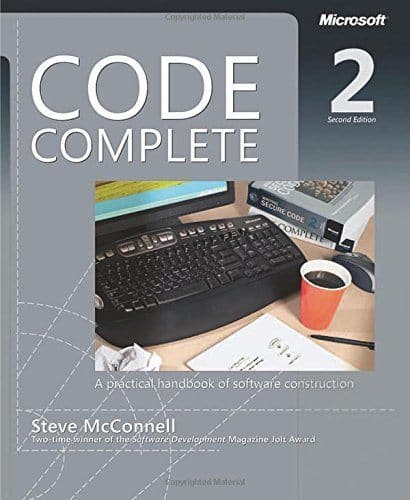
Code Complete: A Practical Handbook of Software Construction, Second Edition
This book is one of the most transformative books I’ve ever read. Immediately after reading this book, the way I wrote my code and the way I thought about writing code completely changed.
The book is full of great advice about how to write good code, regardless of architecture or programming language. Code Complete goes into the details of the structure of writing good code. I’ve never found another book that even comes close to touching many of the topics in this book. I consider this book a must-read for all serious software developers. The book is a bit dated, but still has extremely valuable information.
Clean Code: A Handbook of Agile Software Craftsmanship
This is another one of those books that completely changed the way I wrote code. I can neatly divide my programming career into pre-Code Complete, pre-Clean Code and after. I recommend this book after reading Code Complete, because while Code Complete deals more with the structure of individual lines of code and methods, Clean Code deals with some of the same concepts, but at a slightly higher level.
It’s pretty difficult to read this book and not become a better programmer.
Structure and Interpretation of Computer Programs
I debated putting this one on the list. Is it really foundational? It depends on how solid of a foundation you want to have. If you want to have a really solid foundation, then the answer is a resounding “yes.”
The book is challenging. It deals with functional programming. It was written for the famous introductory programming course at MIT. But, I’d recommend you not only read this book, but go through all the exercises in it. It will be a difficult journey, but you’ll come out the other side a much better programmer than you were before.
Design Patterns: Elements of Reusable Object-Oriented Software
This classical book is critical reading to really understand what design patterns are and become familiar with the most common design patterns you are likely to encounter in your career. It’s not a particularly easy read and the descriptions and examples might be a bit difficult to follow—especially if you don’t have a solid grasp of UML—but, it’s a book I consider a “must read.” If you are having trouble with this book, you might want to start with “Head First Design Patterns.” which teaches the design patterns in this book in a much more digestible way—still, there is no substitute for the original.
Head First Design Patterns
Read the classic first, then read this one, then go back and read the classic one with a renewed understanding. This book makes design patterns much easier to understand. It’s also a useful book for learning how to teach complex topics and make them interesting.
Refactoring: Improving the Design of Existing Code
Although modern IDEs have automated many of the refactorings mentioned in this book, refactoring is still a very important concept to understand in order to write good, clean code—especially in today’s Agile environments. This book covers just about all of the major refactorings that all software developers should know how to execute in any code base. Learning how to refactor your code allows you to breathe new life into it and to have it improve over time as it is maintained, rather than rot.
Working Effectively With Legacy Code
Unless you are fortunate enough to always work on green-field projects, you’ll mostly likely encounter legacy code in your career—and lots of it. I included this book, because it is the foundational programming book on working with legacy code. If you are working on a large code base more than 5 years old, this book might be your new bible. Read it and take it to heart.
[thrive_leads id=’16525′]
Professional development programming books
This section contains programming books that I have found most beneficial to my professional development as a software developer.
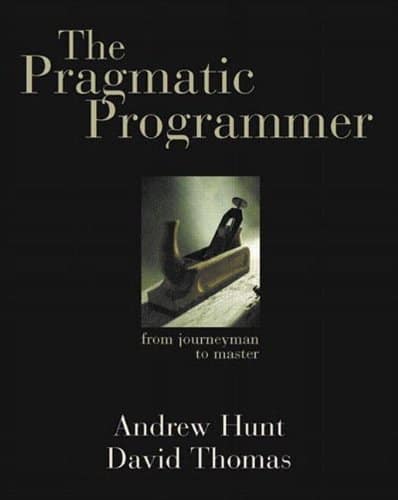
The Pragmatic Programmer: From Journeyman to Master
When I first read this book, it wasn’t my favorite. I still don’t agree with everything said in the book, but even with my misgivings, I have to acknowledge this is a programming book that every software developer should read when they want to transition from being just a coder to something more. There is some extremely pragmatic advice in this book that will bestow upon you lessons that otherwise would take years or even decades to learn.
The Clean Coder: A Code of Conduct for Professional Programmers
This book is all about being a professional programmer. This is a tough read. A lot of developers won’t like this programming book, because the advice is sometimes difficult to swallow. But swallow it if you can, because Bob Martin, the author of the book, is a veteran in the industry and has managed to stay relevant decade after decade of pumping out code. I really found this book helpful in shaping my career and making tough decisions.
The Passionate Programmer: Creating a Remarkable Career in Software Development
This book was one of the main programming books that influenced me to treat my career in software development as a business rather than just something I did. The book is full of all kinds of wisdom about how to increase your skills, maximize your time, keep your career and passion alive and more. I highly recommend reading this book if you want to move beyond programming as just a job.
The Mythical Man Month
All those problems you thought were unique to your project, well I’ve got news for you, they aren’t. They are inside this book. If you want a very practical programming book about complex software development projects, this is it. This book is like a catalog of the most common problems that plague non-trivial software development projects and the book has more than stood the test of time.
Architecture based programming books
These are programming books that an aspiring architect or software developer who cares about architecture should read.
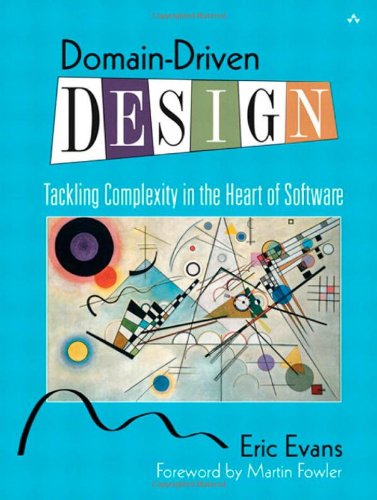
Domain-Driven Design: Tackling Complexity in the Heart of Software
Buckle your seat belt, this is a difficult read. The first time I read this book, I didn’t get it. The second time I read it, I sort of got it. It wasn’t until my third pass through the book that it finally clicked all the way. This book will help you learn how to create a maintainable architecture that is based on domain modeling. Once you learn what is in this book, you can’t go back. You won’t think about software development architecture in the same way again.
Patterns of Enterprise Application Architecture
If you are doing any kind of enterprise application development, you’ll find this book extremely useful. It contains great information about how to design and build an enterprise application from start to finish. What I found most useful though, was the many patterns contained in the book that are often seen in enterprise applications. This is a book I referenced all the time when I was building large enterprise applications for my job.
Enterprise Integration Patterns: Designing, Building, and Deploying Messaging Solutions
This is the absolute guide-book for implementing message bus or service bus architectures. Don’t let the name of the book fool you, this book is all about message buses and all of the patterns used to implement them correctly. If you are doing any kind of integration between applications or services using a bus, you will absolutely love this book.
Refactoring to Patterns
It is one thing to read and learn about design patterns, it is another thing to implement them. It is yet another thing to actually take existing code and refactor that code into design patterns. This is a programming book that teaches you—scratch that—shows you how to move existing code into patterns and how to even move it out of patterns. Should be on every architect’s bookshelf.
Agile programming books
These programming books are some of the best books on Agile development that I have found. I recommend them to anyone working in an Agile environment, whether you are using Scrum, Kanban, XP or something else.
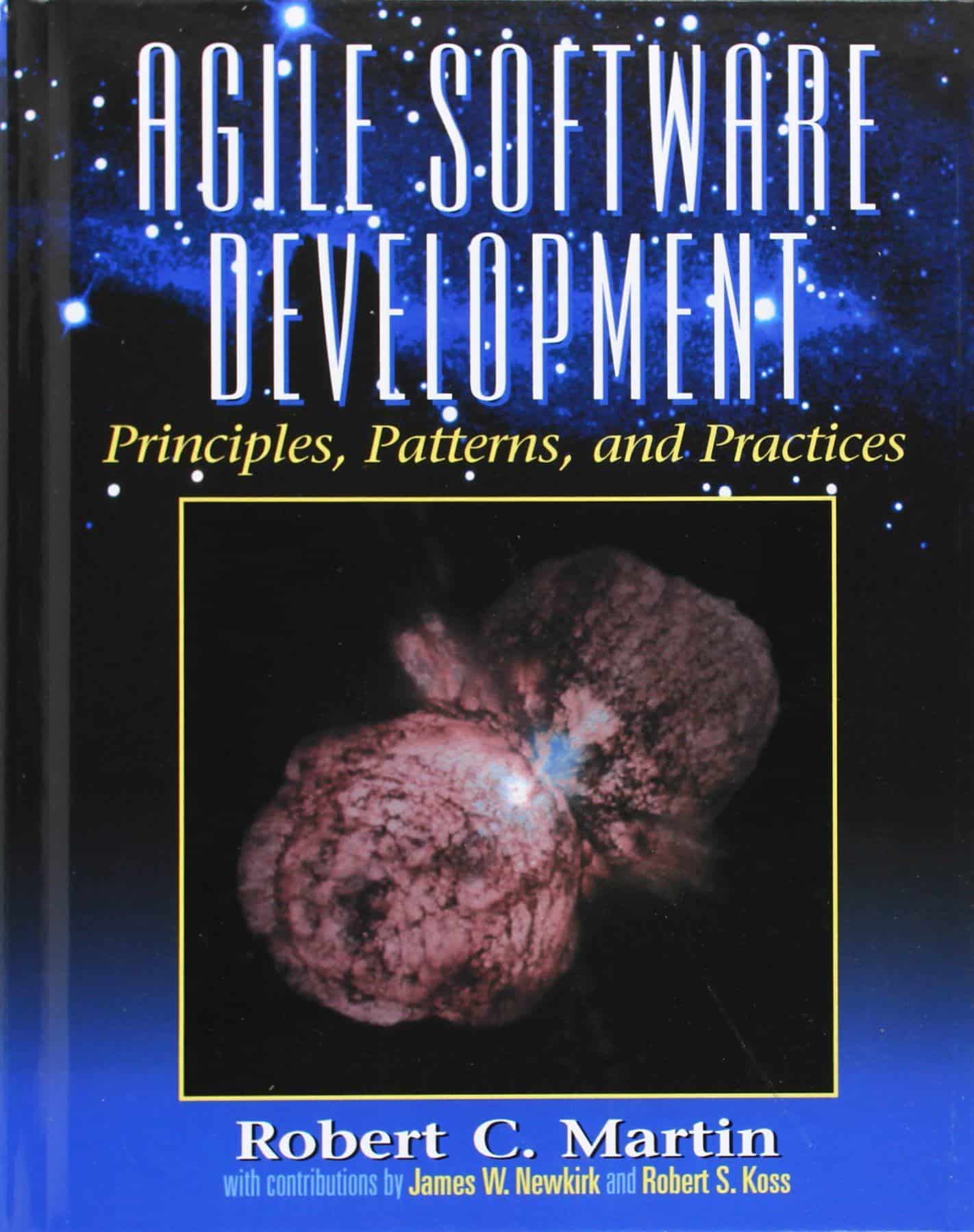
Agile Software Development, Principles, Patterns and Practices
Yes, this is another Bob Martin book, and it is excellent. There is also a C# version of this book. This book takes you through all the core tenants of Agile development without all the fluff. Not only that but it introduces the SOLID design principles which are fundamental to understanding how to write clean, maintainable code. This book was the book that convinced me to actually start doing pair programming.
Agile Estimating and Planning
So many teams get this wrong. This book shows you how to do it correctly. The first time I read through this book, I realized that sound principles could be applied to estimation and planning on an Agile team. Highly recommended for anyone working in an Agile environment.
User Stories Applied: For Agile Software Development
Another great Agile book that helps with a major trouble area: user stories. I’ve worked with some pretty crappy user stories when working on Agile teams, simply because no one knew how to make good ones or what user stories were actually supposed to look like. This book solves that problem.
Extreme Programming Explained
What I consider to be the classic Agile book. A little extreme for some—this is not SCRUM, this is real XP. This programming book is an extremely prescriptive description of how to implement extreme programming, but the ideas in this book can be applied to many different kinds of Agile environments.
Algorithm and interview question programming books
These programming books will make you better at writing algorithms and will help you pass interviews—especially programming interviews where you have to write code.
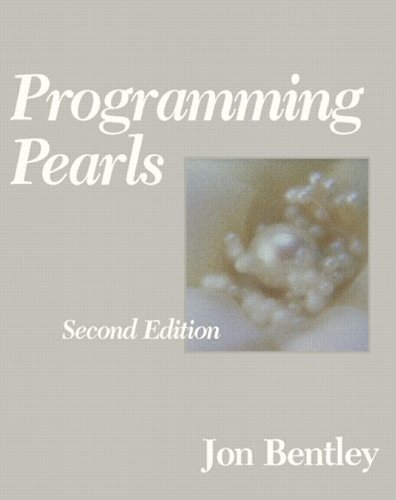
Programming Pearls
The classic book of programming problems. Read this book and actually do all the exercises. If you survive the ordeal, you’ll be a much better programmer and garner a deep understanding of algorithms and algorithm design as well as some critical problem solving skills.
Cracking the Coding Interview: 150 Programming Questions and Solutions
This book is not only one of the top-selling programming books on Amazon, it is one of the top selling books on Amazon, period. And for good reason. The book is full of great interview advice and real programming problems that will not only help you pass a coding interview, but make you a better programmer overall. Go through the book and do the exercises. If you can master the exercises in this book, it will be very difficult to stump you in a programming interview.
Introduction to Algorithms
This book is considered one of the best books on learning algorithms, and for good reason. It is a solid programming book for anyone interested in increasing their ability to write and understand algorithms, which is the core of writing code. If you are going to read any book on algorithms, start with this one for sure.
Language specific and programming language related programming books
This is a mix of really good language specific programming books and books that are related to programming languages in general. I know I’ve probably missed a few here, so help me out.
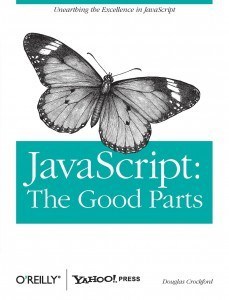
JavaScript the Good Parts
This book might become outdated as JavaScript evolves, but for now, this book is essential. JavaScript was a language that was never designed for the use it is used for today. That means there are quite a few pitfalls in writing JavaScript code. This book has saved me on more than one occasion. If you are going to write JavaScript, you are going to want to read this book.
Thinking in Java
This book not only teaches you how to start programming in Java, but it teaches you how to teach a programming language. I don’t think I’ve ever encountered a better book on learning a programming language than this book. Even if you have no interest in Java, I recommend reading it.
Effective Modern C++: 42 Specific Ways to Improve Your Use of C++11 and C++14
I’ve linked to the modern version of this book, but the whole series of older books is damn good. I learned so much from reading the original Effective C++, More Effective C++ and Effective STL books, that even though I don’t write any C++ code today, I still have fond memories of these books. I’ll admit, the earlier books probably won’t do you much good today if you are writing in modern C++, but if you are obsessed with becoming the best C++ developer possible, you have to read this updated version of the classic.
Effective Java
The Java counterpart is almost as good as the C++ original. Some of the recommendations are dated by the changes to the language, but overall this is still a really good book.
C# In Depth
Do you know C#? Do you really know C#? If you read this book you will. I’ve never read a book that dove as deeply into a language as this book does. Before I read this book, I considered myself an expert in C#. I would have given myself a 10. After, I realized how far from the mark my original estimation of my knowledge was.
Seven Languages in Seven Weeks: A Pragmatic Guide to Learning Programming Languages (Pragmatic Programmers)
I love this book, because it stretches you and makes you a more open-minded programmer. This is a programming book that has the potential to take you to the next level and see beyond pretty religious technology tendencies. This book helped me to see how similar so many programming languages are, appreciate their differences and see just how fast I could learn.
OPs, QA and deployment related programming books
These books are programming books related to anything outside the scope of normal programming activities, including testing, operations and deployment.
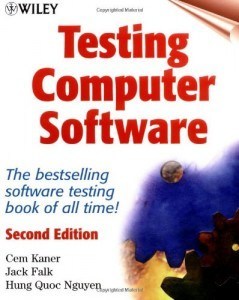
Testing Computer Software
Every developer should read this book to gain a good understanding of QA and testing. This book is very easy to digest, yet a comprehensive book all about testing. After reading this book, I was able to communicate with QA better, write more testable code and avoid defects by learning how to test my own code before throwing it over the wall.
Ship it! A Practical Guide to Successful Software Projects
Lots of great content and practices in this book. Some of them are a bit extreme, but they are all very effective. This book can help you take your software development shop to the next level. It’s a great book to read and then to give to your manager to highlight the value of some best practices like: continuous integration, automated testing, scaled back planning, etc.
Continuous Delivery: Reliable Software Releases through Build, Test, and Deployment Automation
I didn’t really believe continuous delivery was possible until I read this book. This book actually shows you how to build an entire system that will build and deploy tested code right into production. This book goes well beyond continuous integration and takes the entire delivery process into a continual flow. A programming book I highly recommend if you want to automate your entire deployment process—and trust me, you do!
Soft Skills and other fun programming books
These programming books are really not programming books at all, but are books that I have either found immensely valuable in my career, or books that most software developers have really enjoyed.

 Soft Skills: The Software Developer’s Life Manual
Soft Skills: The Software Developer’s Life Manual
Yes, this is my book. I mentioned it before, but I wanted to include it in its proper place as well. In this book I cover everything non-technical that a programmer could possibly be interested in, from career, to personal branding, blogging, learning, teaching, being productive, finances and even a bit on fitness and relationships.
How to Win Friends and Influence People
I really can’t praise this book enough. Yes, it has nothing to do with programming. You might be surprised to find this on a programming books list, but this is a life-changing book. As a software developer, you will deal with people during your entire career. If you learn how to deal with them effectively, you’ll have a much better go of it. So, I highly recommend reading this book. This book changed my life and set me on the path I am on now.
Code: The Hidden Language of Computer Hardware and Software
This is a fascinating book. Again, it’s not explicitly a programming book, but it is all about how computers work at the very lowest level. After reading this book, you’ll understand what the code you are writing is actually doing and how a CPU actually executes your code. This is both a fun and fascinating read.
Gödel, Escher, Bach: An Eternal Golden Braid
Another non-programming book on this programming book list, but a book that almost all programmers will find fascinating. This is a huge book that is one of the most pleasurable books I have ever read. I didn’t ever want to put this book down and I was extremely sad when I reached the end.
The War of Art
This one is another stretch. It is in no way a programming book—not even close—but it is a book that helped me achieve an extremely high level of productivity. This book is the reason why I can sit down and spend 4 hours writing this blog post. It’s an excellent book that will inspire you to be your best, and finally beat procrastination.
What programming books did I miss?
Any programming books that should be on this list?
If so, let me know and I’ll add them.
And if you’d like to see my “top 10” list of books I think every developer should read, I’ve put together a list you download.
Just click the button below to grab your copy:
[thrive_leads id=’16525′]

 What skills do you need to land a programming job in 2021? Well, this is a tricky question to answer. In today’s world, programmers need more than just IT skills to survive in the job market.
What skills do you need to land a programming job in 2021? Well, this is a tricky question to answer. In today’s world, programmers need more than just IT skills to survive in the job market. The whole essence of programming is centered around solving both complex and simplistic coding problems. This is the meta-skill that defines your status as a programmer. You should be able to demonstrate computational thinking and break down complex problems into solvable ones.
The whole essence of programming is centered around solving both complex and simplistic coding problems. This is the meta-skill that defines your status as a programmer. You should be able to demonstrate computational thinking and break down complex problems into solvable ones. If you’re a newbie to the world of programming and have little IT skills, there’s a huge chance you may be feeling under-skilled, especially when you compare yourself to experts in the field. Now that we’ve discussed the soft skills you need to have as a budding programmer and how to list them in your CV, here are some tips that will help you raise your capacities and become a pro in the game:
If you’re a newbie to the world of programming and have little IT skills, there’s a huge chance you may be feeling under-skilled, especially when you compare yourself to experts in the field. Now that we’ve discussed the soft skills you need to have as a budding programmer and how to list them in your CV, here are some tips that will help you raise your capacities and become a pro in the game:

















